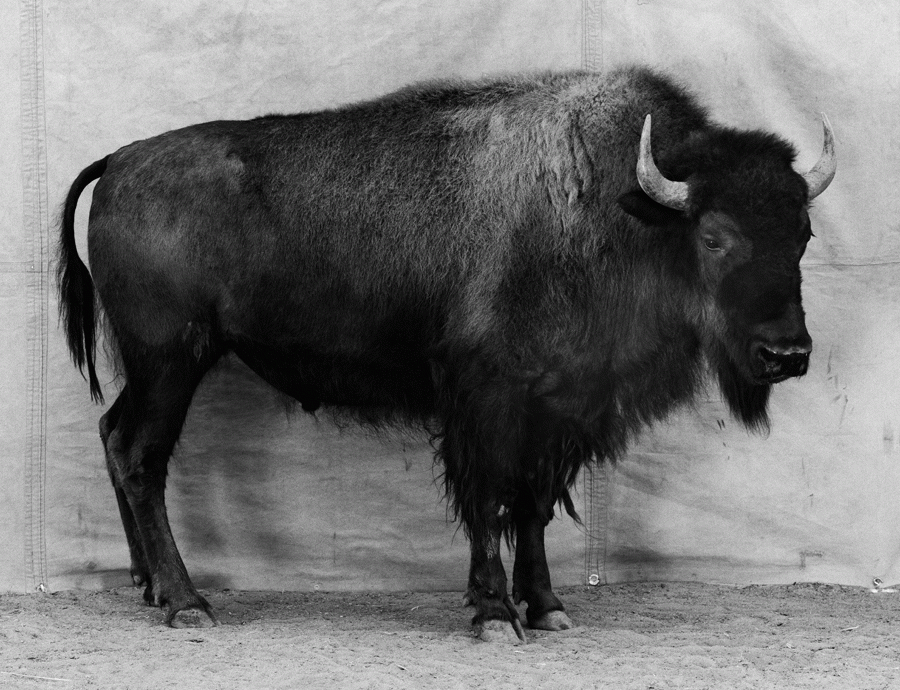Marian Goodman Gallery, London, 3 November – 17 December 2016
Animals are, as Claude Lévi-Strauss asserted, ‘good to think with’. Good, that is, for giving form to human imagination, for structuring our understanding of the world and core cultural beliefs. And good too, you’d therefore rightly expect, for being the subject of an exhibition – one that allows for all sorts of wildly disparate artworks and artefacts to be corralled together. Curated by Jens Hoffmann, Animality is a menagerie of visual culture, a vast and fascinating mixture of historical and contemporary works that trace a mostly serious, occasionally frivolous pathway through the science, ethics and mythology of animal existence.
this isn’t a show that claims to be comprehensive in any way – it’s more of a meandering, philosophical essay
The initial and strongest strand of the show explores traditions of knowledge and natural history – and, following a late print of Albrecht Dürer’s notoriously conjectural The Rhinoceros (c. 1620, reprinted from an original 1515 woodcut) that opens the exhibition, this basically means post-Enlightenment concepts of scientific observation. Across several vitrines, a variety of zoological illustrations are displayed, most of them exquisitely beautiful: the coiling intricacies of Albertus Seba’s reptilian scenes (1734–65), for instance; or the luminescent, near-psychedelic patterns of Louis Renard’s marine dissections (1754). Early photography, too, is brought in, though in a way that feels slightly more cursory given the vastness of the terrain: apart from the obligatory Eadweard Muybridge locomotion studies, the only works are by George Shiras, whose pioneering use of flash in the early twentieth century lent his nocturnal images of American wildlife a strangely frigid, spectral quality. Still, this isn’t a show that claims to be comprehensive in any way – it’s more of a meandering, philosophical essay, suggesting links and correspondences across history. Among contemporary pieces, the most obvious, if ironic, correlates are Balthasar Burkhard’s monochrome photographs from the 1990s, where the uniform poses of animals suggest ideas of domestication and typological classification; and also Hiroshi Sugimoto’s images depicting taxidermied, denatured animals in museum dioramas.
Throughout, the exhibition is punctuated by headings and wall texts – ‘Origins’, ‘Markings’, ‘Extinctions’ and so on. Not sections, really, so much as thematic readings. But it’s just as rewarding identifying other conceptual lineages. The sheer alien strangeness of animal forms, for example, connects Jean Painlevé’s silent films from the 1920s depicting undulating undersea fauna, with the slowed-down semi-abstraction of (Peacock) Mating Season (2016), a 16mm projection by João Maria Gusmão and Pedro Paiva. Another motif is anthropomorphism: from Roe Ethridge’s photographs of livestock given human names, through Maurizio Cattelan’s cartoonish mouse-voices emanating from behind a tiny door (Untitled (Mouse House), 2000), to J.J. Grandville’s wonderful etchings in which clothed creatures function as mid-Victorian social caricatures.
Yet amidst the huge diversity on display, there are also some disappointments. Some works seem rather glib, for a start, the most egregious probably being John Baldessari’s sculpture of a lifesize camel and gigantic needle – whose eye, therefore, unlike in the biblical parable, the camel might conceivably pass through – which just feels like an awfully grandiose gesture for such a simple joke. More fundamentally, it’s hard to shake the sense of a lacuna at the heart of the show. ‘Why Look at Animals?’, asked John Berger in a 1977 essay, arguing that human-animal encounters always involve us confronting the limits of language and comprehension. But, in a show packed full of hundreds of artworks by over 60 artists, it’s striking how few directly address this paradoxical difficulty of communication, this threshold of mute otherness. Only Pierre Bismuth’s The Jungle Book Project (2002) really takes such ideas seriously, modifying the Disney cartoon so that every character speaks a different language version of the film, as a way of alerting us to the ridiculous fantasy of mutual intelligibility between species.
From the January and February 2017 issue of ArtReview
